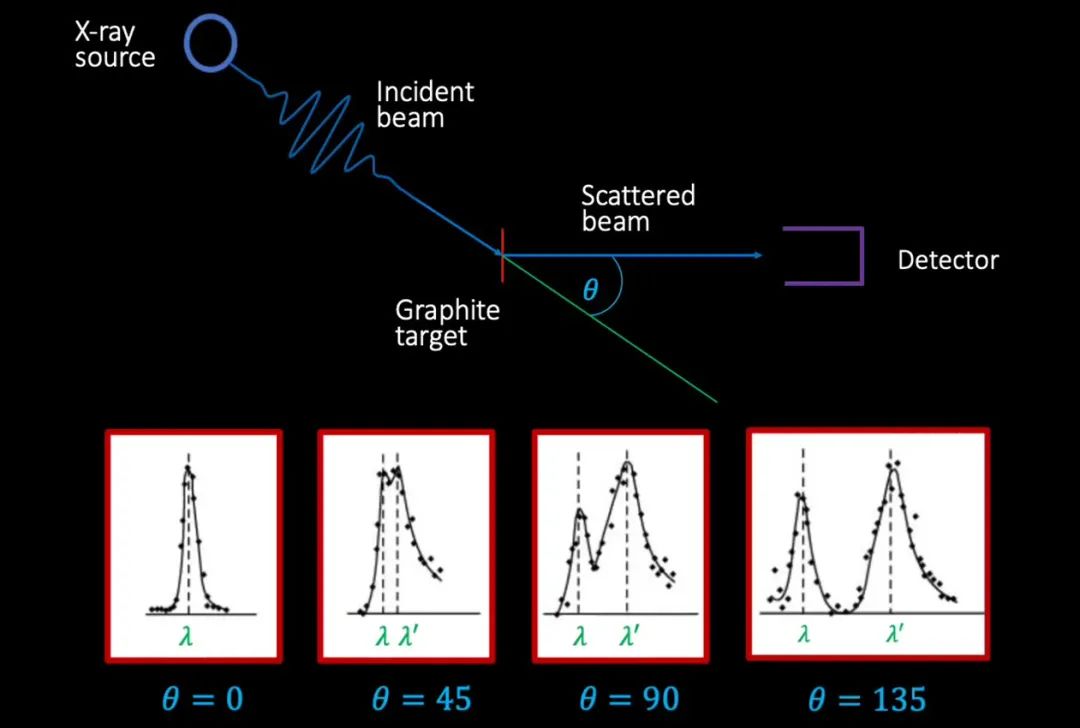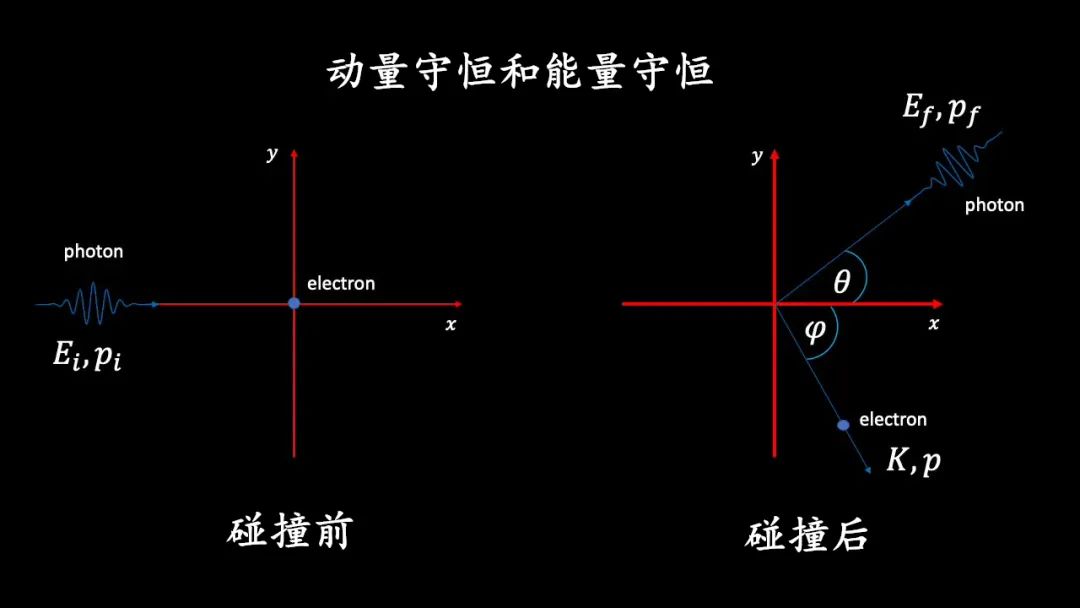What is the Convedon effect?
Author:Institute of Physics of the Ch Time:2022.07.31
At the beginning of the 20th century, it was a period of unprecedented progress in the field of basic physics. Most of the progress revolved around a seemingly simple and harmless problem, that is, what the essence of light and how it interacts with material. The success of electromagnetics at the end of the 19th century made many people believe that light is a wave, a self -propagation ripple in the electromagnetic field.
However, Einstein's interpretation of photoelectric effects in 1905 was based on such a view that light is actually a particle flow called photon, not a wave of continuous change. These ideas are based on the pioneering work of Max Planck in 1900. He can explain the radiation characteristics of thermal objects by assumed that energy only uses discrete blocks or quantum transmission, rather than a continuous way to predict classic physics.
Although Einstein's photon model explains the photoelectric effect, many physicists are still unwilling to use this new and radical light viewing point. After all, in addition to the photoelectric effect, electromagnetics is also a very successful theory. It can explain the extreme of nature to nature. Wide observation. Therefore, the physics community should take the idea of photons seriously. Physicists need to find another example and can only explain the photon model of light. This requires a top experimental physicist who praises Einstein and Planck.
Connpton scatter
In 1919, Arthur Conopon received a doctorate at Princeton University and received a scholarship from the National Research Commission, enabling him to continue his studies at Cavendi Laboratory in Cambridge, UK. Compton studied at Game The scattering and absorption of horse rays. In 1922, he completed the pioneering work on X -ray scattering, and once and for all confirmed the photon theory of light.
Connpton's experiment involved the X -ray beam that defined a beam of wavelength to the graphite target for various scattering angles. He measured the intensity of scattering X -rays as a function of its wavelength. Compton found that although the incident beam is composed of a single wave of λ λ, there are two wavelength peaks in the scattering X -ray. One peak is the same as the wavelength λ, while the other peak λ 'is greater than λ. The difference between them Δλ = λ'-λ, that is, the Cumpton displacement of the wavelength. We can also see from the data that the wavelength Cumpton displacement increases with the angle of observation of scattering X -rays.

So how do we understand this experimental result based on electromagnetic theory? The incident X -ray should be regarded as an electromagnetic wave, and its frequency corresponds to the oscillating frequency of the electric field component of the wave. Enter X -rays can cause free electrons in graphite targets to start oscillation at the same frequency as incident waves. If the frequency of transmitting radiation is the same as incident radiation, the classic electromagnetic theory predict the wavelength of Conopon should not be displaced.
So how to explain this result is the key. Conopaton explained that his experimental results were the photon model using light. Connpton assumes that the incident X -ray beam is composed of a beam of photon stream. The energy of each photon is e = HF, and these photons collide with one -to -one free electrons in the graphite, just like two collision billiards. Essence Because incident photons transfer part of its energy to electrons that collide with scattering photons, its energy will be lower than incident photons. We know that the energy of photons is proportional to its frequency, and because of the speed of light C = Fλ, we can know that the energy of photons is inversely proportional to the wavelength. Therefore, if the energy of the photon decreases, the wavelength will increase, which is consistent with the observed experimental results.
Compton also noticed that the wavelength of scattering radiation has nothing to do with the materials contained in the target, which means that the scattering process does not involve the entire atom. As a result, Connpton assumed that the scattering was caused by the collision between the X -ray photon and the single electron inside the target. He also assumed that the behavior of these electrons was like they were completely free. Therefore, Cumpton can use the principle of constant momentum and energy conservation to provide detailed calculations for electronic-photon interaction, and predict changes in the wavelength of scattered photon.
Calculation and results
Introduce the right -angle coordinate system and position the static electronics at the origin. We assume that the inlet X -ray photon has initial energy E_i and initial momentum P_i, the energy E_F and momentum P_F of the collision photon, and leave from the direction of the angle θ of the X -axis; And leave from the angle φ relative to the X -axis, as shown in the figure below.

At present, the amount of momentum of the application: the total amount of motion before the collision must be equal to the total amount of motion after the collision. The constant formula in the direction of the X and Y directions is as follows:
If we add these two expressions together, we can get the following equal forms through some solution:
Next, we use the energy conservation to a particle collision. The principle of energy conservation pointed out that the total energy before the collision must be equal to the total energy after the collision, so we have the following equal form:
In addition, Einstein also gives the relationship between energy momentum:
Among them, M is the quality of static, while the still quality of the photon is 0, and the static quality of the electron is Mₑ, so in the end we can get two equal forms:
Now, we can put the results we get together, and after complex calculations, we can get:
In order to get the relationship between the wavelength, we take the Planck constant H:
Then, in the use of equivalent λ = H/p, in the end we can get the relationship between the photon wavelength before and after the scattering:
From this formula, we can see that the wavelength Conopon displacement is associated with the scattered angle, which can explain the results observed by the experiment.Connpton believes that this significant consistency between theory and experiments can undoubtedly prove that the scattering of X -rays is a quantum phenomenon.The interpretation of the Conopon effect and photon model won the Nobel Prize in Physics in 1927.Reprinted content only represents the author's point of view
Does not represent the position of the Institute of Physics of the Chinese Academy of Sciences
If you need to reprint, please contact the original public account
Source: Vientiane experience
Original Title: Nobel Prize in Physics: Compton Effect
Edit: Tibetan idiot
- END -
Strict beating!Regarding the electronic scam artifact Goip, you must know these things

The reporter learned from the Ministry of Public Security on June 13 that recently...
[Scientific Power] Global Freshwater Crisis!How to make seawater drinking water efficiently?

According to the latest report released by the World Meteorological Organization, ...